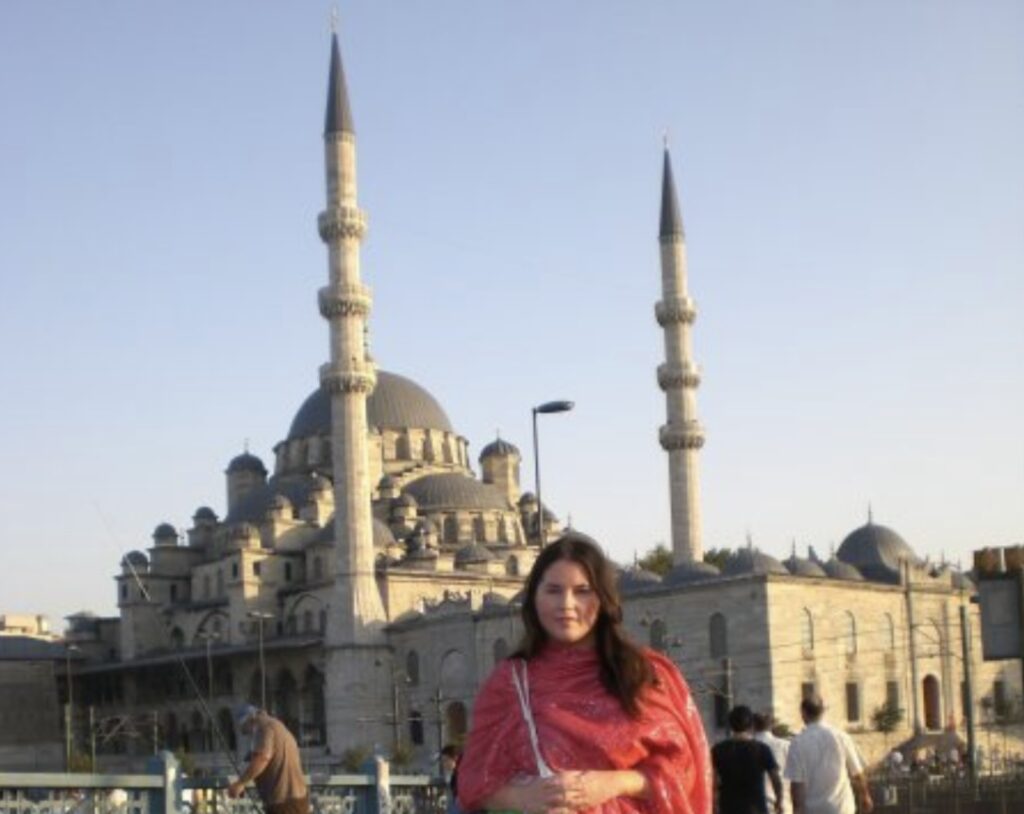
“Istanbul is a book that is never finished; it is a novel that keeps writing itself, with every step you take in it.”
– Turkish author, Selim İleri
This time, I travel from Asia to Europe, crossing the Bosphorus from Kadıköy to Eminönü. It is late afternoon and the sun glints off the waves, seagulls circle overhead as the city stretches out before us. Its iconic landmarks – the minarets and domes of the Blue Mosque and of Hagia Sophia sparkle in the sea-reflected light, and behind them the cupolas of Topkapi Palace rise up on the skyline ahead as we pass by Galata Tower.
Along the waterfront men patiently cast fishing lines into the water, and as I step onto the jetty the smell of saltwater and grilled mackerel blends with scents of lemon, cinnamon and Turkish coffee. Tourists wheel suitcases, street sellers hawk their wares, car horns beep furiously in a background symphony, while tempting stands of sticky tulumba and baklava line the route to the spice market.
Once known as Byzantion, briefly Nova Roma, then famously Constantinopolis (Constantinople), now Istanbul, the city has always been at the crossing point of cultures and continents, with its mix of Greek, Roman, Byzantine and Ottoman influenced architecture and history, its narrow streets leading down to the water, and brightly painted timber-framed houses in old neighbourhoods like Fener-Balat. There’s a palpable sense of possibility – stories lie in wait around every corner, inspiring ancient Byzantine poets, Ottoman writers and modern storytellers alike.

I have been learning Turkish for several months now – mostly by letting hours of long-running soap operas play in the background. I learn evet, yok, lütfen, merhaba, Allah Allah, tamam. Each scene is full of effusive greetings, courtesy, gentle humour.
The language is soft, melodic, and – for this I am grateful – phonetic.
Alongside the soap operas I have bought several books in Turkish, with their respective English translations, and work through them diligently. I am making progress, soaking up the conversations around me, picking out familiar phrases and words.
Home to over 16 million people, Istanbul is both modern metropolis with plenty of thrusting skyscrapers, built in amongst living ancient history all at once. There are of course many Istanbuls. The Istanbul for tourists – visiting the palaces, mosques, gardens, the Grand Bazaar, taking their photographs outside the colourful Fener houses. The Istanbul of young Turkish Istanbullu, discussing life at outdoor cafés and tea houses, or older life-long residents chatting in shaded doorways or stopping in local shops to talk about latest family news. There’s an Istanbul of immigrants, of taxi drivers, of street-sellers. An Istanbul of nostalgia and historical glory. As well as the striving urban city, forward-looking, shiny and ambitious.
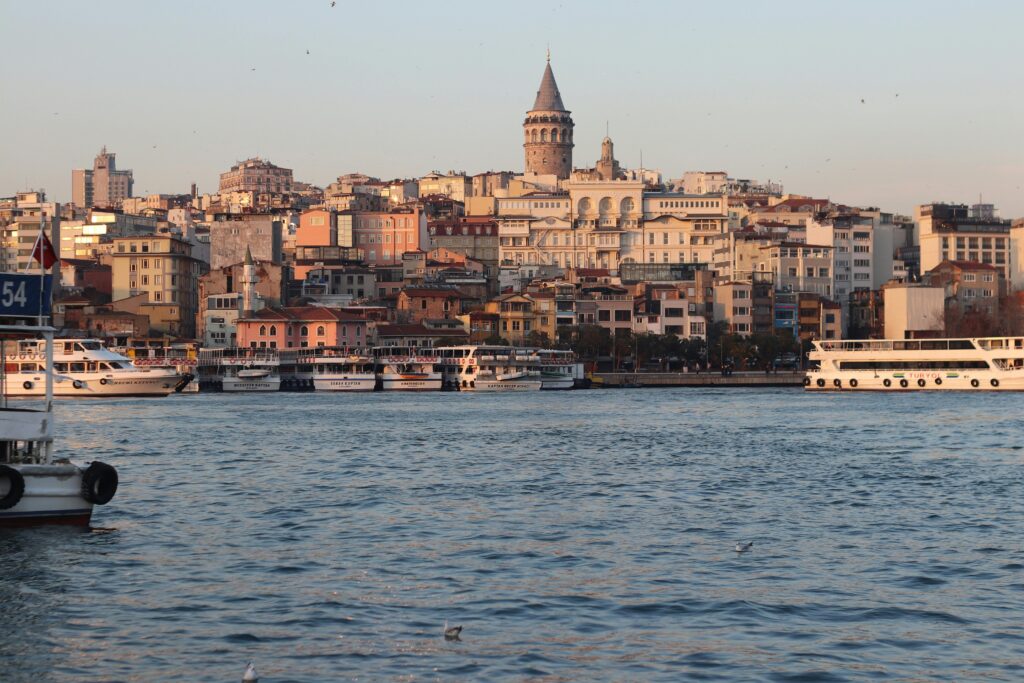

But, I’m mostly intrigued to discover the many Istanbuls as written by its writers.
I wander up to the Spice Bazaar – also known as Misir Çarşısı (Egyptian Bazaar). For travel writer Jan Morris, this place was:
“A sensory overload in the best way possible, where every turn offers new textures and flavours, as if the city’s history is ground into every grain of spice.”
The 17th century building with its arches and labyrinth rows of stalls, is exactly that – an overload of cinnamon, cardamom, rose, mint. There are stalls with deep trays full of nuts, dried fruits, jars of honey or olives, piles of dried herbs, of saffron and sumac. The air is full of the scent of coffee, and stacks of lokum (sweet Turkish Delight) – its jewel-like colours of ruby red, orange, pale pink rose, pistachio green, all sugar-dusted and can be found in many of the narrow market aisles, next to endless scented teas.

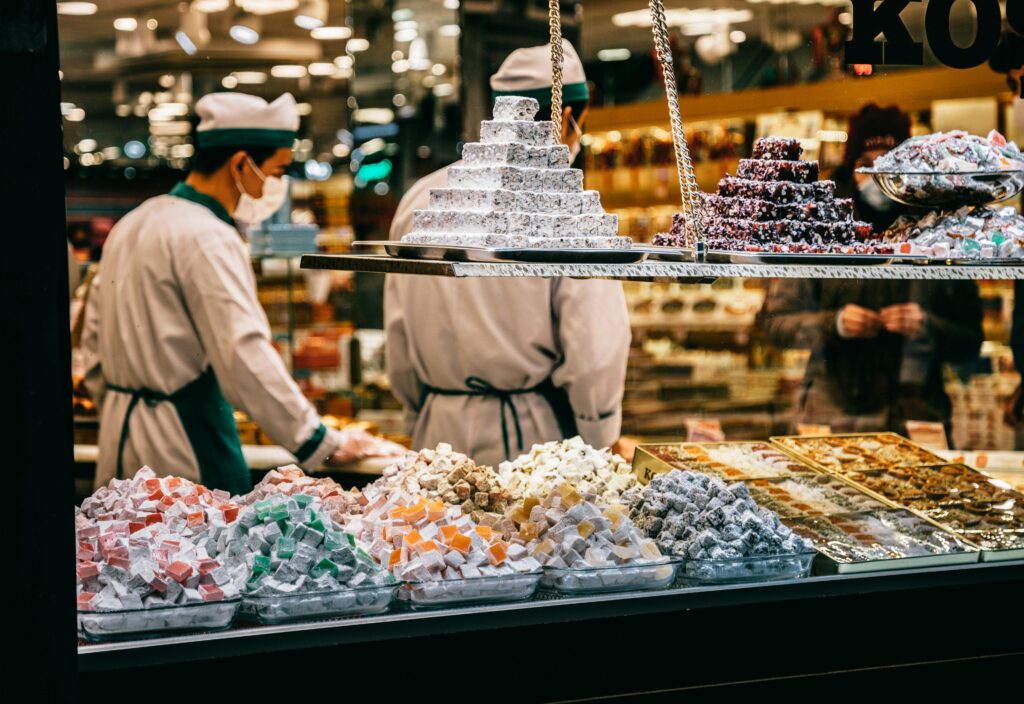
The spice bazaar is like a miniature of the city’s energy – chaotic, welcoming, overwhelming, seductive. It’s a timeless place, where you feel the Byzantium, the Ottoman pasts, and the modern life of the city all gathered together.
For Orhan Pamuk, Istanbul’s Nobel laureate, the Spice Bazaar is:
“A vibrant mosaic of history and daily life, where the city’s soul reveals itself in colours and smells.”
I buy small bags of nuts, sweet sticky treats, some rose water, lokum wrapped in paper, and leave the bazaar to the west walking uphill to Cağaloğlu Yokuşu. This neighbourhood is full of second-hand bookshops, historic printing houses, and sahaflar (book dealers).
Istanbul has always been a city of writers.
Another five or so minutes along, and I reach Beyazıt Square. Here, behind the mosque is an open-air passage, Sahaflar Çarşısı, full of second-hand book stalls and antiquarian dealers selling their wares. I browse stalls full of old maps, vintage postcards, old Turkish novels, posters, books. The sellers are happy to chat, I practice my Turkish. The atmosphere is calmer than that of the spice market.
Wandering on to Gülhane Park, I am curious to visit the Ahmet Hamdi Tanpınar Library, a Turkish literature library set within a restored polygonal-shaped Ottoman building built into the walls of the park itself. Walls lined with thousands of books, downstairs a Writer’s Cafe and upstairs exhibitions on various Turkish writers, home to literary events, it pulses with literary history. Its polished wooden floors, the quiet reading areas, the bright chandeliers and beautiful stained-glass windows, create a rarified atmosphere.
I pause in the gardens, and take out the book I’m reading. It’s a quiet haven here in the heart of the city, and I rest a while listening to children playing nearby, their shouts ringing out as they call to each other.
For Turkish poet and playwright, Nazım Hikmet, the city is a poem onto itself:
“Istanbul is the place where the sky is still the colour of the sea, the colour of the Bosphorus, and the city becomes a museum for the heart.”
Literary life here however isn’t lived in museums. It’s found in many of the city’s cafes, in its streets and vibrant neighbourhoods where conversations run on long into the night.
It’s a short walk to cross Galata Bridge and I head to FiL Books in Karaköy. Part bookshop, cafe, publishing house, FiL is a charming, low-key place to soak up Karaköy life.
I sit outside at one of the little tables, and try the lokum I bought earlier with a coffee. The contrast of bitter and sweet tastes evokes what I feel about Istanbul – a beautiful, soulful city caught between its desire for freedom and its rootedness in tradition.
For Turkish writer Refik Halit Karay:
“Istanbul, with its breeze, its sea, its noise, its people, is a place where anyone who comes, becomes one with it.”
I feel that as I walk along the waterfront, making my way back to the ferry, crossing once more from west to east.

Top 10 Bookshop Cafés in Istanbul
If you’re looking for a taste of Turkish literary life, or just a quiet or charming spot to sit and write or read, then these ten Istanbul bookshop cafés are for you:
1. Minoa Books & Coffee – Akaretler, Beşiktaş
Minoa, with over 60,000 titles in English and Turkish is a spacious, multi-level bookstore. The café offers coffee and food, and the bookshop is a favourite spot for creatives, readers and writers alike.
https://minoa.com/en/pages/hakkimizda
2. FiLBooks – Karaköy
A cozy spot known for its curated selection of art and photography books. FiLBooks doubles as a café and hosts workshops, as well as being a publishing house. It attracts a loyal, creative crowd.
3. İstanbul Kitapçısı – Kadıköy
With scenic waterfront views from the top of the ferry terminal at Kadıköy, this is the perfect spot to enjoy some leisurely reading. The book shop has a good selection of books, and you get your coffee on site in the cafe with incredible Bosporous visuals.
https://www.istanbulkitapcisi.com
4. Türk Alman Kitabevi Café – Taksim
Established in 1955, this historic bookstore specialises in German and English literature alongside Turkish writing. Great spot for coffee and a quiet reading setting.
5. Nail Kitabevi – Kuzguncuk
Set in a charming 19th-century building, full of cosy reading and coffee nooks, Nail Kitabevi offers an excellent selection of books and a quiet café, making it a favourite with locals.
6. Tasarım Bookshop & Café – Kadıköy
With the focus on art, architecture, and design, this bookstore and cozy café provides a creative space for readers and writers alike.
7. Ada Kitabevi – Beyoğlu
Situated in the historic Suriye Pasajı, Ada Kitabevi combines an excellent bookstore with café, often hosting cultural events and art exhibitions.
8. Books & Coffee – Karaköy
This bookstore/café offers a diverse selection of books in multiple languages and is a convivial place to meet up with friends.
9. Homer Kitabevi – Beyoğlu
With an extensive collection of books in different languages, you can also enjoy the cozy reading nook with a cup of Turkish tea.
10. Fahriye Café – Kadıköy
A charming café, picture quirky living room style, that doubles as a bookstore, Fahriye Café offers a relaxed environment for readers and coffee enthusiasts alike.

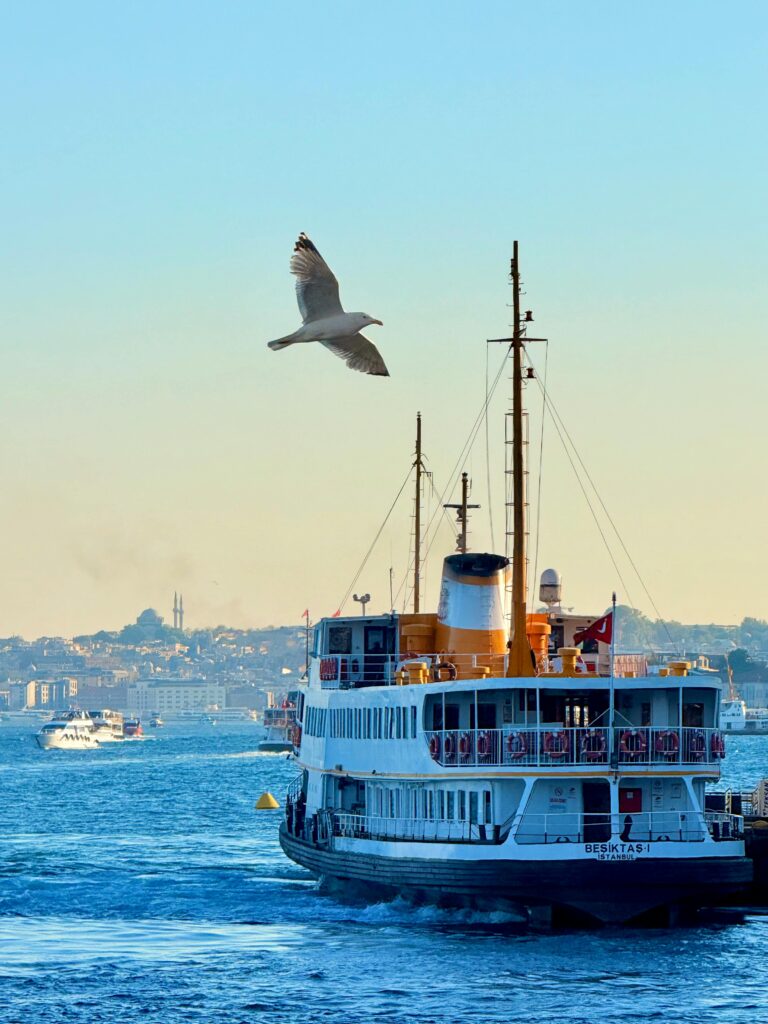
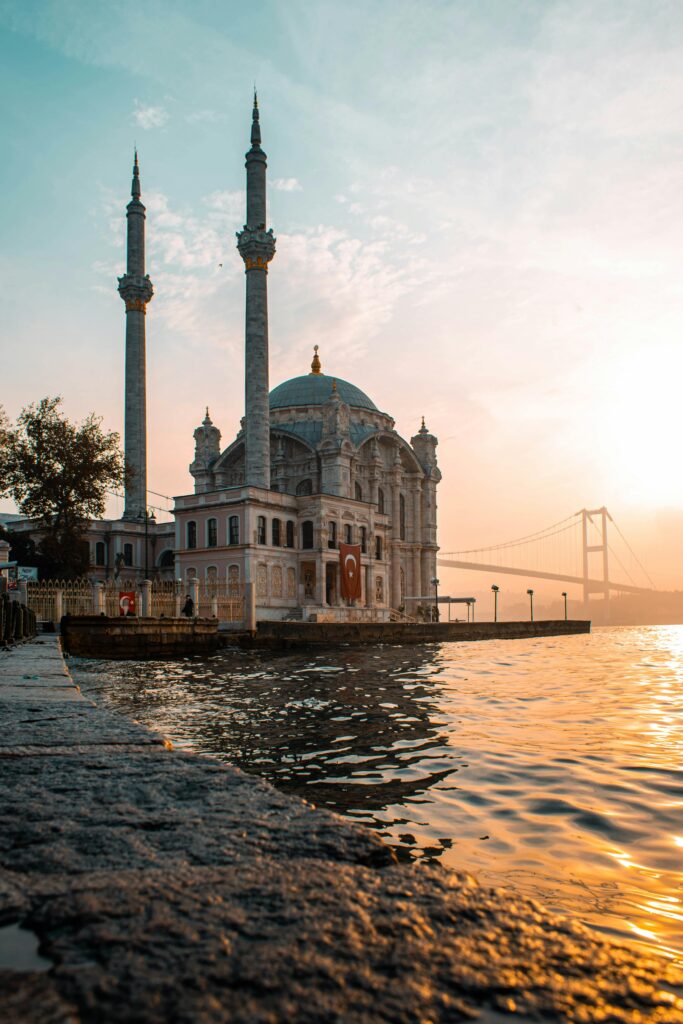
Laura McVeigh is an international bestselling author and travel writer. She has authored books for Lonely Planet, DK Eyewitness Travel and leading publications. Her work has been featured by Newsweek, BBC, Traveller Magazine, New Internationalist and many more. Her writing has been translated worldwide. She is Founder of Travel-Writing.com – helping aspiring travel writers build careers they love, and Publisher of Green Travel Guides – www.greentravelguides.world – exploring green, slow and sustainable travel. She also loves to write about the art of storytelling and writing with purpose.
Learn more about Laura’s writing at: (fiction) www.lauramcveigh.com | (travel) www.lauramcveightravel.com